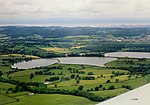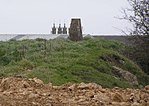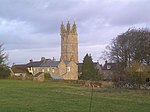Barrow Gurney
Civil parishes in SomersetEngvarB from September 2013OpenDomesdayVillages in North Somerset

Barrow Gurney is a village and civil parish in Somerset, England, situated in the unitary authority of North Somerset on the B3130, midway between the A38 and A370 near the Long Ashton bypass and Bristol Airport, 5 miles (8.0 km) south west of Bristol city centre. The civil parish includes Barrow Common, and has a population of 349.It is close to Barrow Gurney Reservoirs, which supply drinking water for Bristol, and feed the Land Yeo which runs alongside the B3130 through the village. It was also the site of Barrow Hospital.
Excerpt from the Wikipedia article Barrow Gurney (License: CC BY-SA 3.0, Authors, Images).Barrow Gurney
Bridgwater Road,
Geographical coordinates (GPS) Address Nearby Places Show on map
Geographical coordinates (GPS)
| Latitude | Longitude |
|---|---|
| N 51.4045 ° | E -2.6678 ° |
Address
Barrow Gurney Fountain
Bridgwater Road
BS48 3SQ
England, United Kingdom
Open on Google Maps









